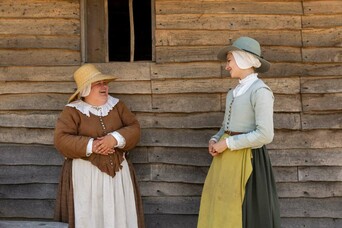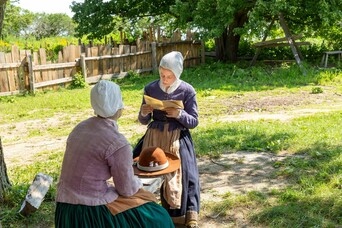
Activities & Games

Talk like a Pilgrim
The Pilgrims talked a little differently than we do today. If you visit the Museum's 17th-Century English Village, you will notice that the townspeople say words you know in a funny way, or even say some words you don't know at all.
Historic Cooking
Have you ever wondered what was eaten at the First Thanksgiving? Or What people in 17th-century New England were cooking in Plimoth Patuxet? View recipes carefully crafted by our experts using primary sources and scholarly research.

Riddles
Riddles and word puzzles were as popular in the 17th-century as they are today. Test your wit and see if you can solve our real 17th-century riddles!
Banner, Talk Like a Pilgrim, and Riddles Images by Kathy Tarantola Photography